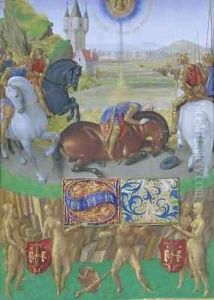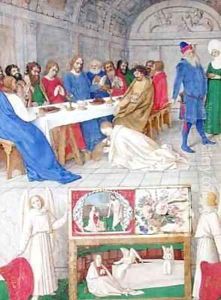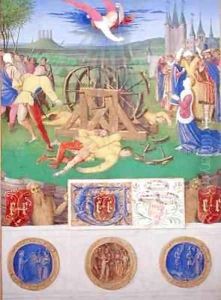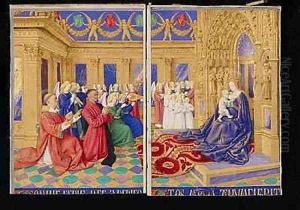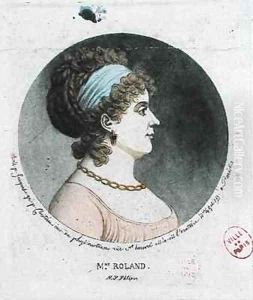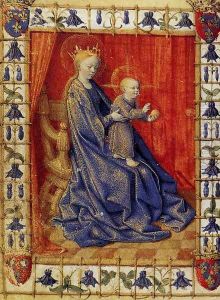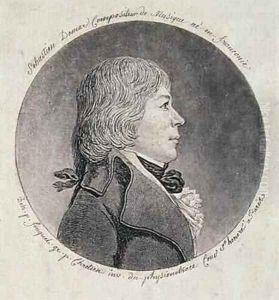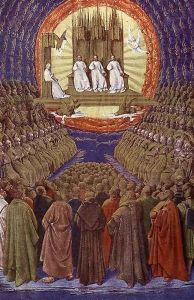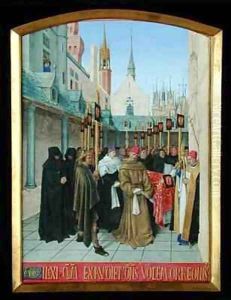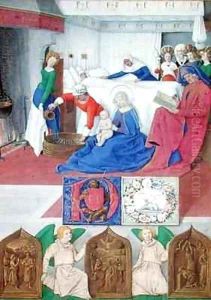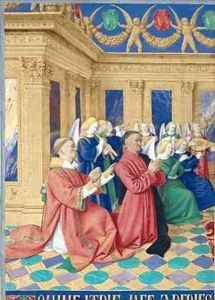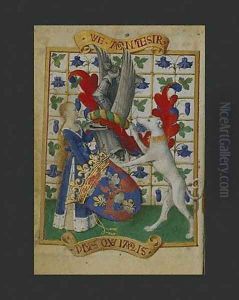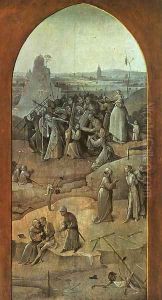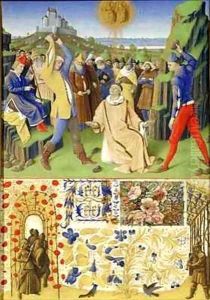





The Suffering of the Saints The Martydom of St Stephen
-
About Reproduction
Discover the allure of art with our faithful reproduction of "The Suffering of the Saints The Martydom of St Stephen", originally brought to life by the talented Jean Fouquet. Unlike posters or prints, our hand-painted oil painting breathes an unique sense of depth and texture into your space. Every detail, every stroke, and every texture is meticulously recreated, paying the perfect homage to Jean Fouquet and his artistic vision.
Owning this piece is more than just decoration - it's a statement of your refined taste in art. Let the vibrant colors and intricate details of this replica serve as a daily reminder of the beauty in our world. Elevate your decor and appreciate the richness of art with our replica of this masterpiece.
-
Painting Description
"The Suffering of the Saints: The Martyrdom of St Stephen" is a notable work by Jean Fouquet, a preeminent French painter of the 15th century, renowned for his mastery in both panel painting and manuscript illumination. This artwork, which vividly depicts the first Christian martyrdom—that of Saint Stephen, as recounted in the Acts of the Apostles in the New Testament—showcases Fouquet's adept use of color, composition, and emotional depth, hallmarks of his artistic style that positioned him as a pivotal figure in the transition from the medieval to the Renaissance period in European art.
Jean Fouquet, born around 1420 in Tours, France, was deeply influenced by Italian art during his travels, integrating Renaissance ideals with the Northern European Gothic tradition. "The Suffering of the Saints: The Martyrdom of St Stephen" exemplifies this synthesis, combining the detailed narrative storytelling and intricate gothic elements of Northern Europe with the emerging techniques of perspective and humanism characteristic of the Italian Renaissance.
The painting captures the moment of St Stephen's martyrdom, stoned to death by a crowd for preaching the Christian gospel, making him the first martyr in Christian theology. Fouquet's depiction is notable for its dramatic intensity, the vivid portrayal of the figures, and the emotional resonance of the scene. The artist's use of color, light, and shadow not only enhances the dramatic effect but also serves to focus the viewer's attention on the central figure of Stephen, thereby elevating the spiritual and moral significance of the martyrdom.
While the exact date of creation is not definitively known, it is believed to have been painted in the mid-15th century, a period during which Fouquet received numerous commissions from the French court and the nobility, as well as from ecclesiastical patrons. "The Suffering of the Saints: The Martyrdom of St Stephen" is considered a significant contribution to the body of religious art from this period, reflecting both the artist's personal vision and the broader cultural and spiritual themes of the time.
Today, the painting is celebrated not only for its artistic merit but also for its historical significance, offering insight into the religious sensibilities and artistic innovations of 15th-century France. As a testament to Jean Fouquet's legacy, "The Suffering of the Saints: The Martyrdom of St Stephen" continues to be studied and admired for its contribution to the development of European art.
-
Lead Time & Shipping
When you order this oil painting replica, it typically takes 2-3 weeks to paint. If the artwork is more complex, it might need a little more time to ensure the best quality. Once it's ready, we'll send you a photo for your approval. After you give the green light, we'll ship it to you for free.
-
Return & Refund
We believe in the quality of our hand-painted oil painting reproductions, and your satisfaction is our priority. If for any reason, you are not completely satisfied with your purchase, we offer a 45-day return policy. You can return your artwork within 45 days of receipt and receive a full refund. Please note that the artwork must be returned in the original packaging and in the same condition as it was received.





